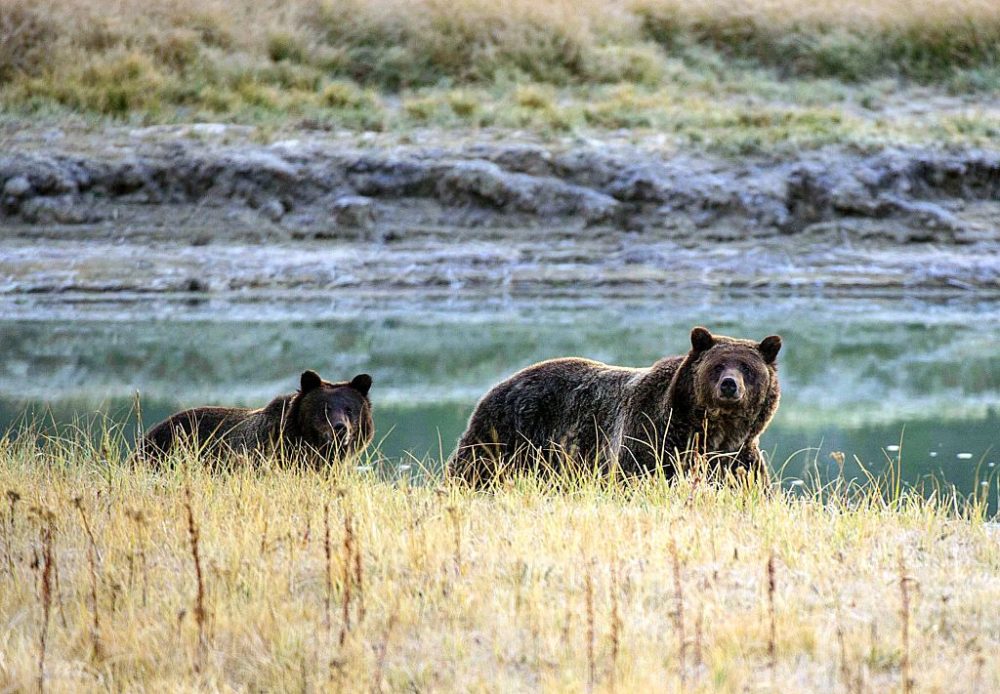Advertisement
4 Injured From Grizzly Bear Attacks As Population Rebounds From Extinction Threat
Resume
Montana's Department of Fish, Wildlife and Parks say a fourth person has been injured in a grizzly bear attack in Montana.
Wildlife coordinator Quentin Kujala says part of the reason for the attacks is that grizzly bears are in the middle of hunting season to prepare for the winter. More people are also out on the landscape right now because it is archery season in Montana.
“[Archers] are doing it early in the morning, and they're hunting through the day to dusk. So those are periods that we know a lot of wildlife, to include the grizzly bears, are active,” Kujala says. “And then on the bear side, it is fall, so they're in a state of hyper-fascia,” which means, “they're pursuing food as they lay down additional layers of fat for this coming winter hibernation period.”
Kujala says there is “no definitive evidence” that the recent attacks were all done by the same bear.
He says there are more grizzly bears out there because the species has been recovering from the danger of extinction. When grizzly bears were first listed as endangered, there were about 150 total roaming the Greater Yellowstone region. Now, there are close to 700.
“This is a case where the Endangered Species Act — that is to say the protections that the Endangered Species Act represents... and also the accommodation in habitat management that the ESA brings about — those have been successful measures put in place,” Kujala says. “The bears as individuals and then some total as a population have responded with the growth that those numbers represent today.”
Kujala says part of his department’s job now is to let people know that they are more likely to encounter grizzly bears and in areas where they may not have seen them before. He says it’s always smart to have bear spray handy when out in these areas.
“Bear spray, time and again, has shown to be a successful deterrent to keep bears away from making contact with the hunter in some cases, or if contact is made driving the bear off,” Kujala says.
While most of the time bears don’t attack humans when in close proximity, Kujala says people should be aware that it can happen.
“The bear, it's an intimidating beast. An adult male might be on the order of 600 pounds or more,” he says. “They're fast, they're quiet. They can certainly threaten. They can kill. They can maim, not just humans but livestock. And so they represent a source of anxiety, a source of fear. They also represent a source of awe for folks.”
Marcelle Hutchins produced and edited this interview for broadcast with Todd Mundt.
This segment aired on September 27, 2019.

